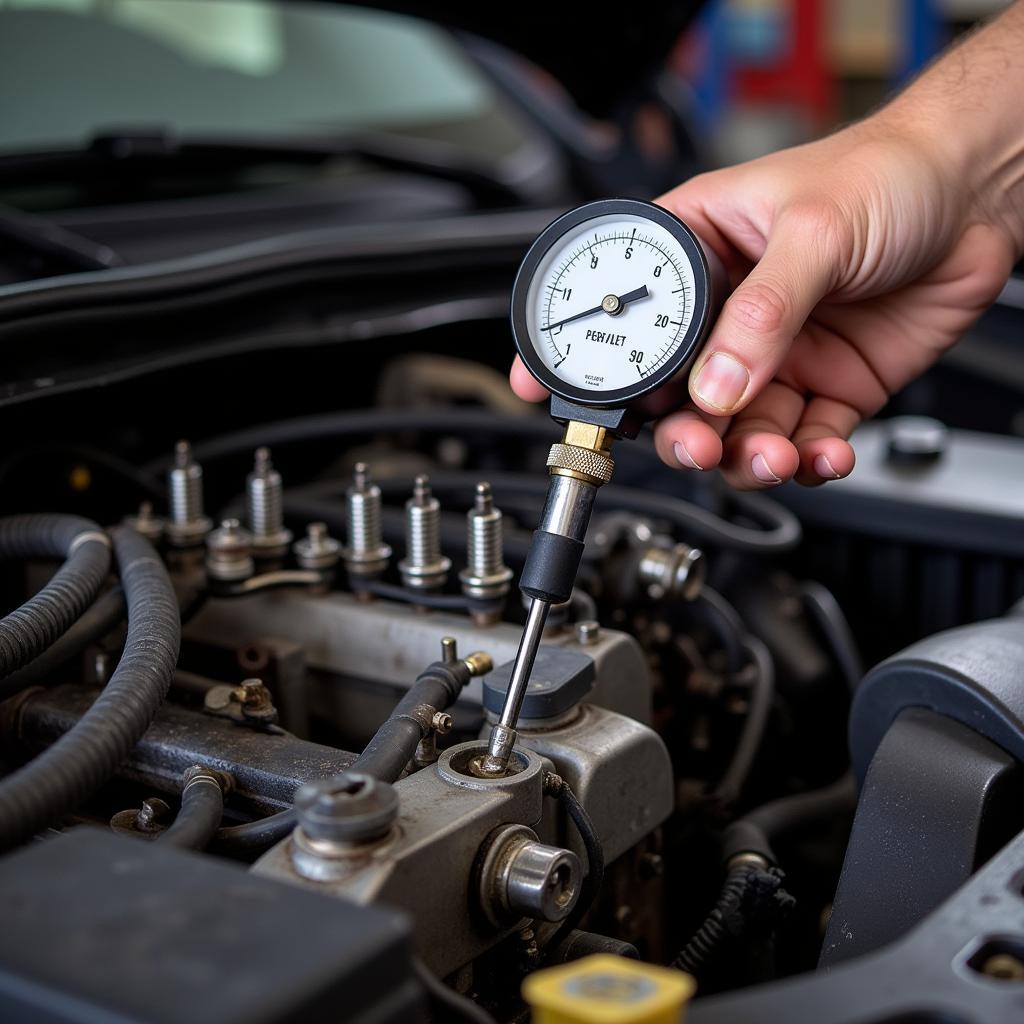Leaking valves in your car can lead to a range of problems, from reduced performance to catastrophic engine failure. Understanding the causes, symptoms, and solutions is crucial for maintaining your vehicle’s health and longevity. This guide provides a detailed look into fixing leaking valves, empowering you to address this issue effectively.
Understanding Car Valve Leaks
Valve leaks occur when the valves within your engine fail to seal properly. These valves regulate the flow of air and fuel into the combustion chamber and the exhaust gases out. A leak disrupts this precise process, leading to performance issues and potential damage. Several factors can contribute to leaking valves, including worn valve seals, burnt valves, or a warped valve seat. Identifying the root cause is essential for implementing the correct fix. Imagine a leaky faucet – a small drip can waste a significant amount of water over time. Similarly, even a minor valve leak can drastically impact your engine’s efficiency and performance.
Do you suspect a valve leak? Look out for these common symptoms: decreased power, poor fuel economy, rough idling, and a distinct ticking or tapping noise coming from the engine. If you experience any of these, it’s time to investigate further. Early detection can save you time, money, and potential headaches down the road.
If your car is burning oil, check out this article: how fix a car motor that burns oil.
Diagnosing the Problem
Pinpointing the exact source of the leak requires a systematic approach. A compression test is a valuable diagnostic tool that measures the pressure within each cylinder. Low compression in one or more cylinders often indicates a valve leak. A leak-down test takes this a step further, introducing compressed air into the cylinder to pinpoint the leak’s location.
 Diagnosing a Valve Leak
Diagnosing a Valve Leak
Fixing Leaking Valves: A Step-by-Step Guide
Fixing a leaking valve can range from a simple seal replacement to a more involved valve and seat repair. Let’s break down the process:
- Remove the Valve Cover: This gives you access to the valves and related components.
- Inspect the Valve Seals: Look for signs of wear, cracks, or hardening. Replace damaged seals.
- Check the Valves and Seats: Examine the valves for burning or pitting and the seats for warping or damage. If necessary, the valves can be lapped or replaced, and the seats can be resurfaced.
- Reassemble: Once the necessary repairs are complete, reassemble the components, ensuring proper torque specifications are followed.
“Regular maintenance is key to preventing valve leaks,” says John Miller, a seasoned automotive technician with over 20 years of experience. “Simple checks like regular oil changes and ensuring your engine doesn’t overheat can significantly extend the life of your valves and seals.”
Have you had a brake line break recently? Here’s a guide: car break line break fix.
Preventing Future Leaks
Prevention is always better than cure. Here are some proactive steps to minimize the risk of future valve leaks:
- Regular Oil Changes: Clean oil keeps engine components lubricated and reduces wear.
- Maintain Proper Coolant Levels: Overheating can warp the cylinder head and damage valves.
- Use Quality Fuel: Low-quality fuel can contribute to valve deposits and wear.
“Addressing valve leaks promptly is crucial,” advises Sarah Davis, a certified mechanic and automotive instructor. “Ignoring the problem can lead to more extensive and costly damage down the line.”
If you’re dealing with a smoking car engine, check this out: how to fix a smoking car engine.
Fixing Leaking Valves Car: Conclusion
Addressing leaking valves requires a proactive and informed approach. By understanding the causes, symptoms, and solutions outlined in this guide, you can effectively tackle this issue and keep your car running smoothly. Don’t hesitate to reach out to AutoTipPro at +1 (641) 206-8880 or visit our office at 500 N St Mary’s St, San Antonio, TX 78205, United States for expert assistance with fixing leaking valves and other car maintenance needs.
Is your 99 Corolla having EVAP issues? Read this: how to fix car evap 99 corolla.
If you’re unsure about any aspect of diagnosing or fixing leaking valves, seeking professional help is always recommended. A qualified mechanic can accurately diagnose the problem and provide the necessary repairs. Remember, preventative maintenance is the best way to keep your car in top condition and avoid costly repairs down the road. A quick fix for burning oil can be found here: car burning oil quick fix.






Leave a Reply